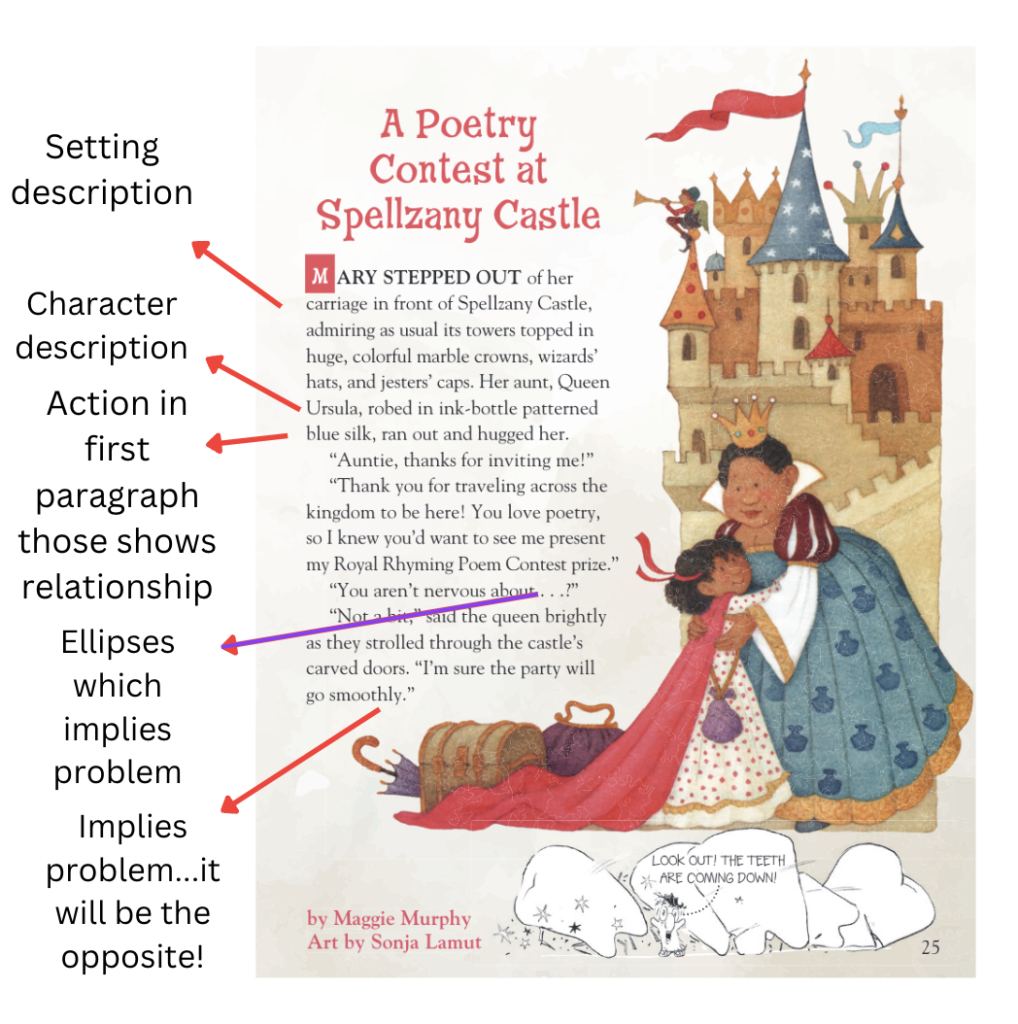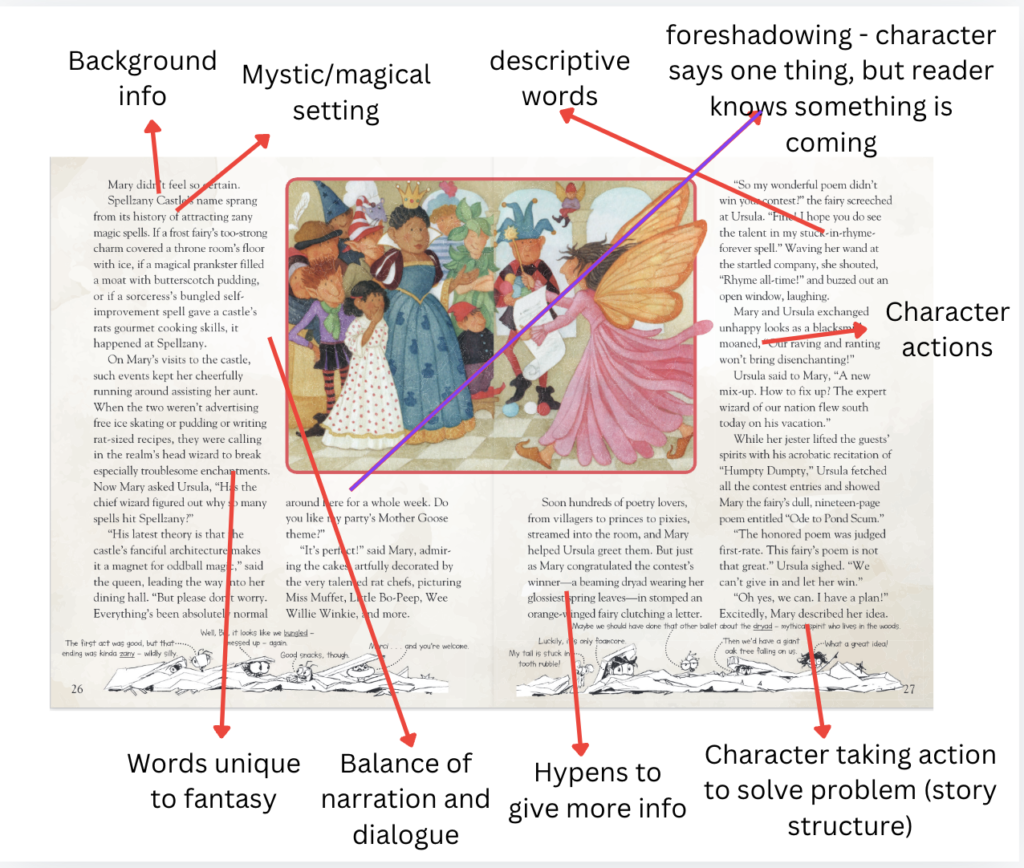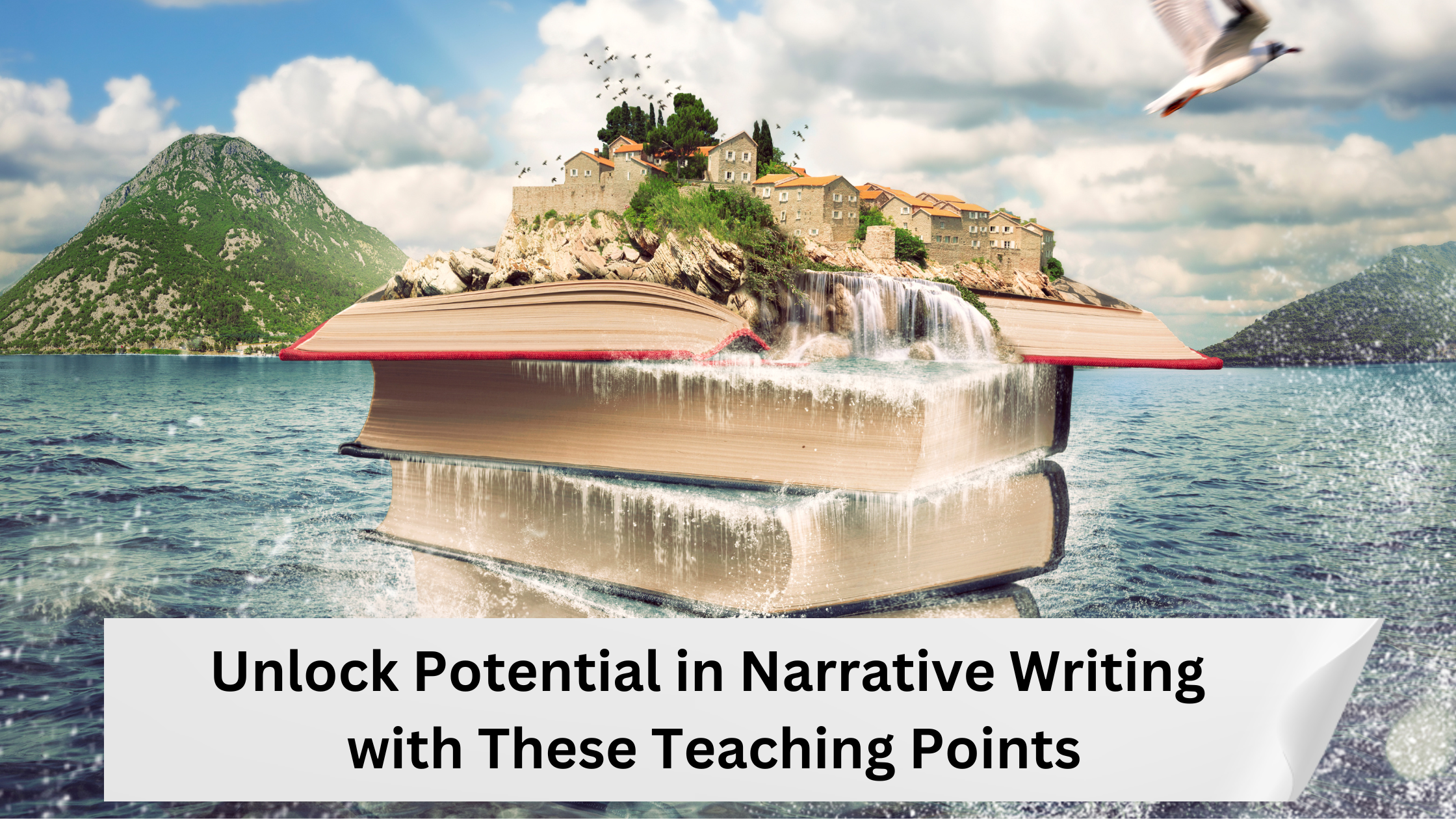This is the second post in a series of blog posts on the topic of pulling teaching points from mentor texts. “How do you pull teaching points from mentor texts,” is one of the most often asked questions we get. And, it’s some of the best PD that I have facilitated with teachers. So much learning comes from when you put a stack of authentic real-world writing in front of teachers and you say “study what craft moves the author made.” It opens up the door to teaching writing in a way that is very engaging for the teacher and for the students. AND, you can address your standards through this process.
It’s our goal in this series of blog posts to show you the possibilities for teaching points from mentor texts. As we have worked with teams of teachers in the past, they often say, “I don’t even know what I am looking for.” So, we are giving you lots of possibilities of teaching points that MAY be in the mentor texts you are using.
This post will be structured in the following way:
- What genres are in narrative writing?
- List of possible narrative teaching points
- Teaching points from a published book (K-2 example and 3-6 example)
What Genres on in the Narrative Writing Type?
If you’re wondering what I mean by narrative type, you are not alone!
When I was in the classroom, I didn’t realize that narrative, informational and opinion/argumentative were writing TYPES, not genres. By studying the ACTUAL genres of narrative writing, you begin to see SO many possibilities for teaching and engagement.
We are starting with this before we get into teaching points because your teaching points may vary depending on the genre you choose. For example, if you choose fantasy, you will need to study how fantasy authors choose to describe their mystical setting. But, if you choose personal narrative, the author doesn’t choose the setting.
Let’s start with this document. It outlines possibilities for genres and also includes published mentor text examples. Click the image to access a PDF.
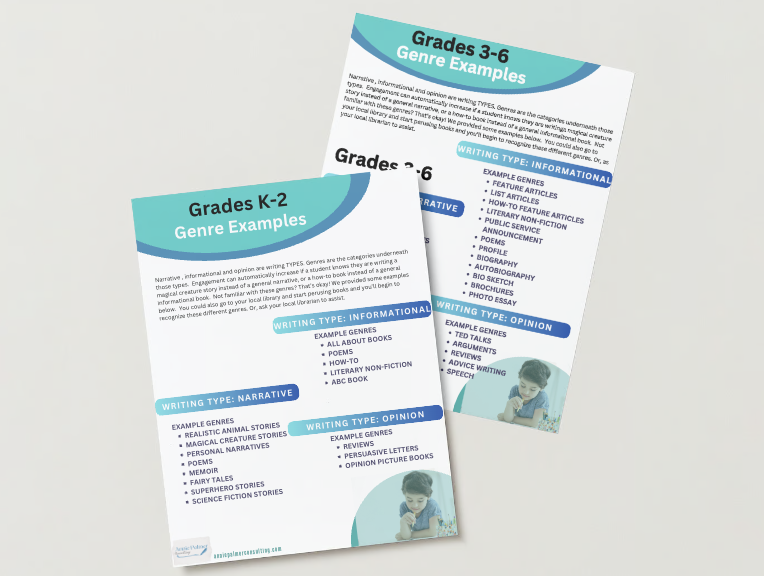
When choosing your genre type, you might consider the following:
- Do you have a reading standard that asks your kids to know story elements? If so, writing a personal narrative is not going to help support that reading standard as much as a realistic fiction, fantasy or historical fiction writing will. This is simply because personal narratives don’t have made-up characters and could also be missing a problem and solution.
- What genre would engage your students? Fantasy is a popular genre amongst upper elementary students and one many of them have read a lot. K-1 students tend to love fiction stories with animal characters. Literary non-fiction is a popular one for second grade. These are non-fiction books that have a narrative tone to them. An example is Bat Loves the Night by Nicola Davies which chronicles a bat’s nocturnal adventures through the night, providing facts through a narrative-type structure.
- What genre do students rarely have the opportunity to write throughout your K-5 or K-6 system? Giving them the opportunity to do so could be a big motivator.
- Which genre do you love and have a lot of resources for? Don’t discount your energy to teach a certain genre. This shouldn’t be the deciding factor, but the energy you bring to a unit will impact the energy your students have. And, the ones you have most resources for are going to be easier for you to put together a unit with.
List of Possible Narrative Teaching Points
Note: This is not an exhaustive list. As you look at mentor texts in your unit, you will likely add to this list.
CRAFT TEACHING POINTS
When we say craft teaching points, we are referring to the actual moves an author makes in their writing–not the process moves such as generating ideas and revising. This refers to aspects such as details, introductions, structure, word choice, focus, etc.
Detail Teaching Points
- Character actions
- Character thoughts
- Dialogue
- Narration
- Character descriptions (feelings, traits, physical)
- Setting descriptions
- Comparison detail
- Background information (upper elementary)
Focus Teaching Points
- Sticking to events that relate to the problem of the story
- Being clear on what the problem is
Structure Teaching Points
- Introducing the problem through conflict between two characters
- Introducing the problem by how a character is feeling
- Introducing the problem by a character’s actions
- Introducing the character by naming their traits
- Introducing the character by actions
- Introducing the character by character’s inner thoughts
- Stretching out scenes that reveal the problem (upper elementary)
- Scenes that reveal the theme (upper elementary)
- Transition words
- Balance between narration and dialogue (upper elementary)
- Paragraphing
- Ending with a lesson learned
- Ending with a happy outcome
- Ending with dialogue
- Ending with character thoughts
Sentence structure
- Repetition to emphasize a point
- Short sentences to communicate meaning (such as an angry character)
- Longer sentences to describe something
Illustration techniques
- Character’s physical details
- Multiple pictures on a page to show sequence of events
- Setting details
- Character emotions (via shape of mouth, eyes and eyebrows)
- Motion lines
- Zooming in/zooming out
- When NOT to include background details
- Color to communicate mood
Conventions
- Use of punctuation and capitalization to communicate meaning.
- Quotation marks with different dialogue tags
- Use of different types of sentences
Process Teaching Points
When we say process teachings points we are referring to the skill of using the writing process. The writing process cannot just be steps we walk our students through. Use of the writing process is a SKILL of a writer that has to be modeled, taught, reflected on, and reinforced.
Generating ideas
- Moments of strong feelings from your life (personal narrative)
- Characters and their traits which might lead to problems (realistic fiction – ie a perfectionist student)
- Problem we all have (realistic fiction)
- Possible heroes and villains (fantasy)
- Mystical settings (fantasy)
- A problem from the past (historical fiction)
Prewriting
- Sketching
- Story arc
- Story elements organizing
Drafting
- Just draft – don’t over think
- Talk to overcome writer’s block
- Maintaining energy to write
Revising
- To revise as I go or at the end
- WAYS to revise (post-it notes, drawing lines, another paper, etc.)
- WHAT to revise (word choice, sentence structure, etc.)
- Recopying is not revising
Publishing
- Using different tools to publish
Teaching Points from a Published Book/Magazine
Below we show you examples of teaching points. This should get you started in noticing the craft moves authors make, also known as reading like a writer. The most powerful part of you reading this blog is if you pull some published mentor texts, gather a group of teacher friends and analyze the books for teaching points, similar to what we did here.
Thanks to Steve Hankins and Ross McKenzie for allowing us to use their beautifully written and illustrated book entitled Dave the Dino Braves the Dark. If you live in the Kansas City area, check out more books by Steve Hankins at KD’s books in Lee’s Summit, MO.
The fantasy story is from Crickett magazine. Many magazines with amazing mentor texts can be found at your local library and downloaded for free.
Note: Keep in mind, students in grades K-2, will be using published picture books as their mentors. Students in grades 3-6 will use short stories and articles, such as those from magazines. The reason grades 3-6 is different is this: The mentor texts we use should be as similar as possible to the type of writing our kids will do. The majority of the time, we are asking our students in grades 3-6 to write short stories and short articles so those are the mentor texts we should be pulling.
Primary Mentor
This mentor text text blurs the lines between realistic fiction and animal stories. It’s a beautiful text with simple, but powerful wording and illustrations. Check out a few pages from the book and possible teaching points below.
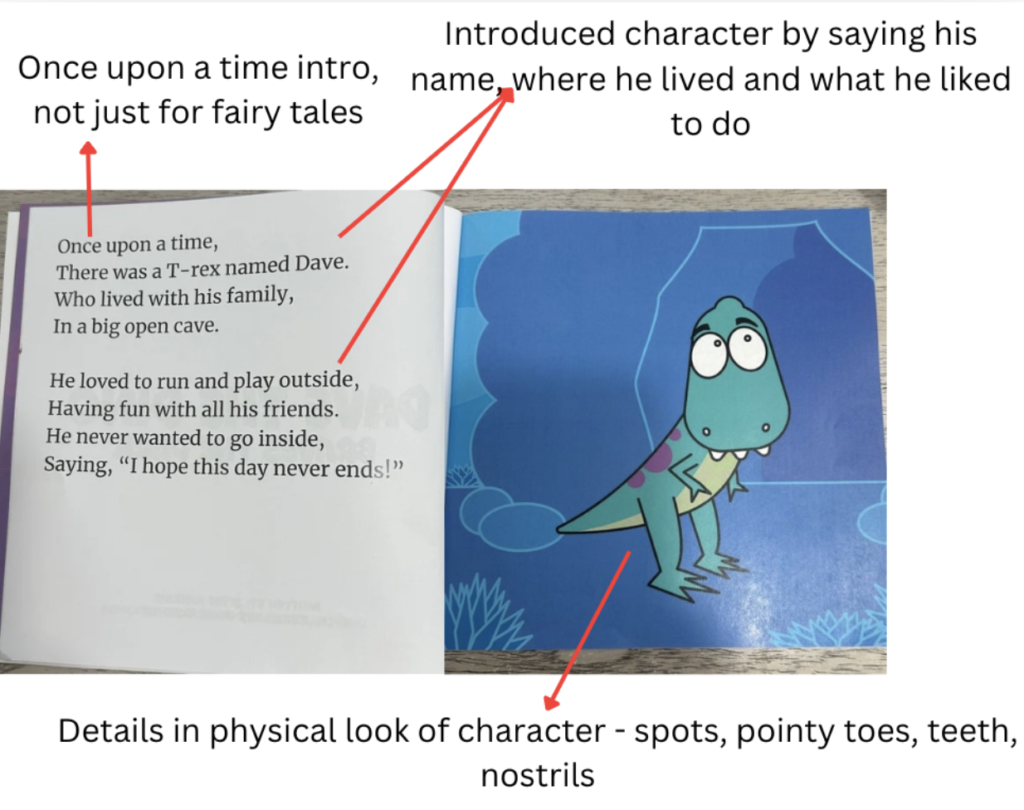
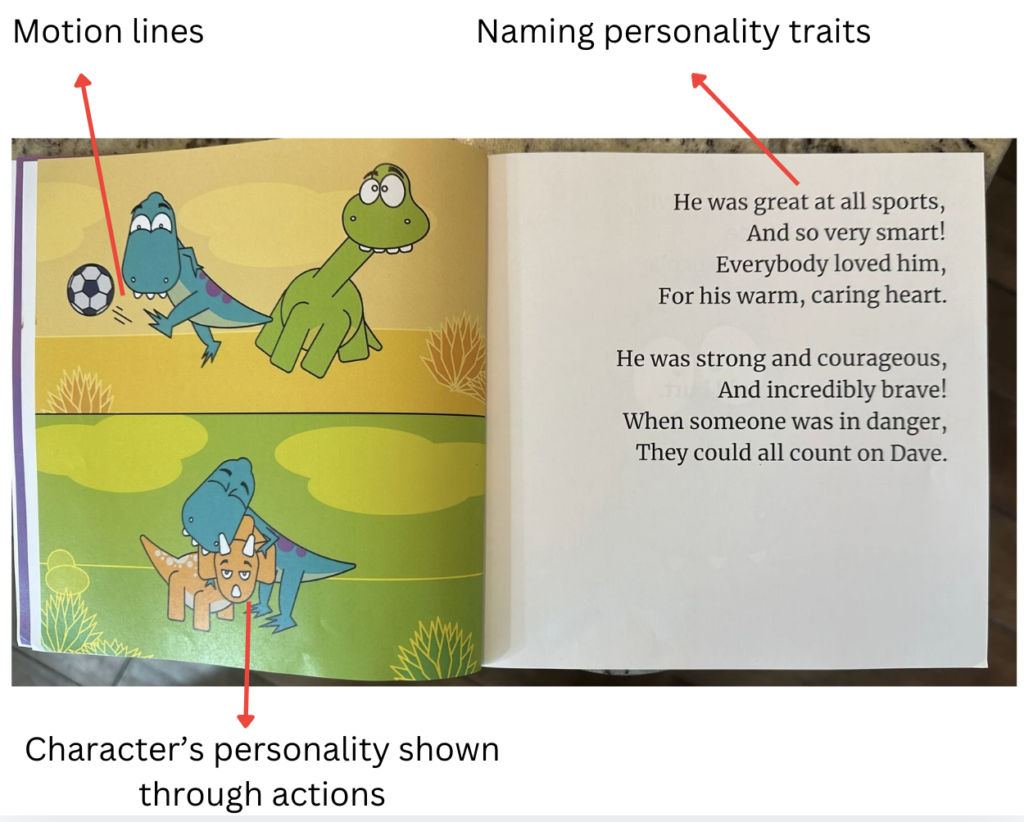
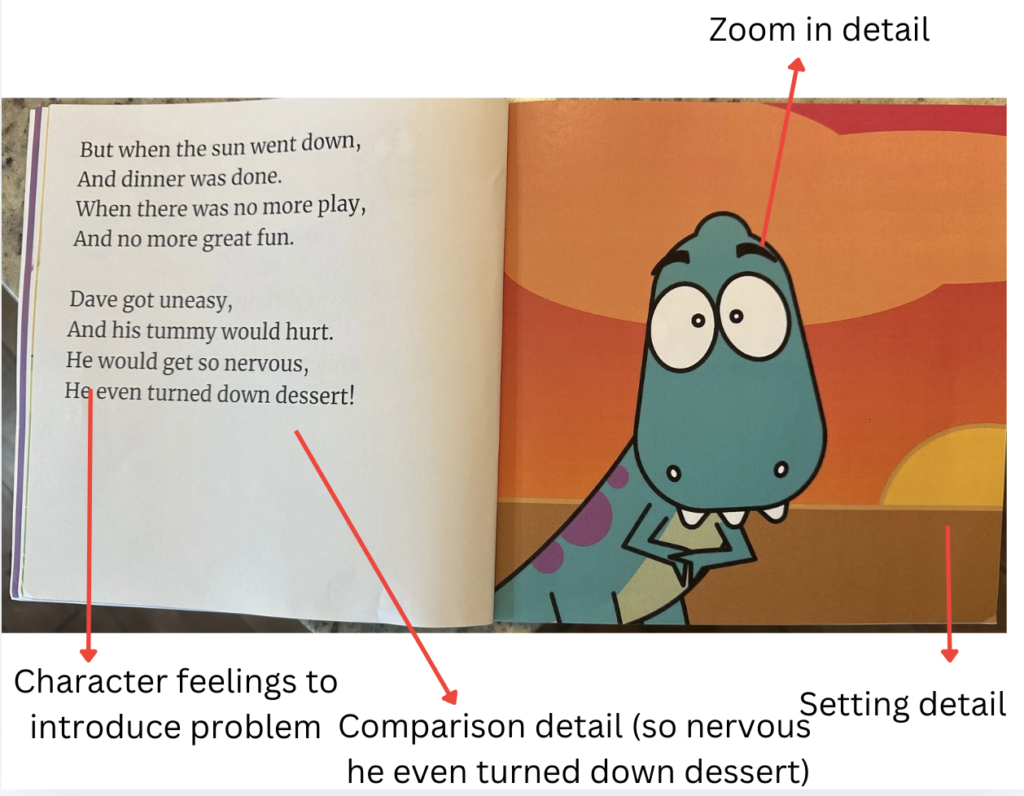
Upper Elementary Mentor Text
This mentor text is a fantasy. The setting, word choice and characters are unique to this genre–and engaging for a lot of kids! Check out a few pages from the story and possible teaching points below.
